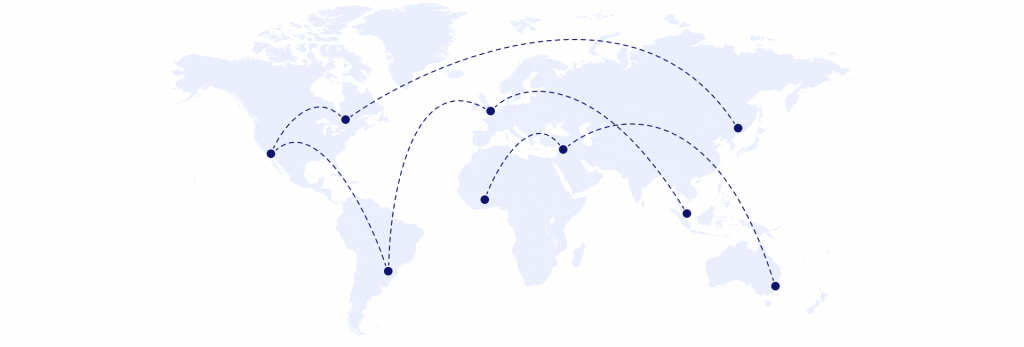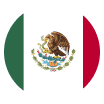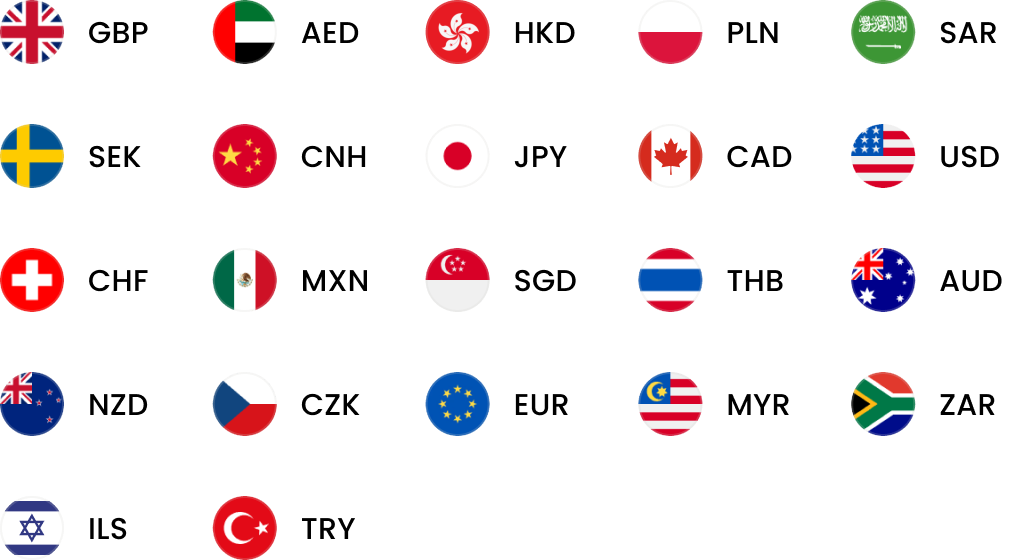How to set up a business abroad in 11 steps
Discover the steps to setting up a business abroad — including taking customer payments like a local — below, and launch your international expansion today.

Whether you’ve conquered your domestic market or you want to become a big fish in a different pond, setting up a business abroad can be a great way to complement your existing revenue. Just how do you set up a business in an international market, though? With so many different legal systems, consumer preferences, languages and operational challenges to overcome, where and how do you get started?
We can’t set up your international business for you, but we’ve collated the main things you need to do to get started, regardless of your specific target market or business category.
Develop your business internally
Steps one through four may require some revision as you develop and position your business before actually expanding abroad (for example, by signing legal documents or building a website in the local language).
1. Audit your business
The first step to setting up a business abroad is to perform a SWOT analysis (strengths, weaknesses, opportunities and threats). In simple terms, this means identifying your existing strengths, recognising your weaknesses, understanding the potential opportunities awaiting your business in other markets, and categorising the threats your business may face.
Your SWOT analysis can help determine your target market choice (see step two) as you discover economic pull factors in different counties. For example, a recent free trade agreement bolstering digital access for businesses or a flourishing emerging market ripe for new players. Simultaneously, your research should show you what you need to watch out for at early junctions (like heightened legal requirements for businesses or different currency values affecting your budget). Take a look at our article International business risk factors to consider for some inspiration to help you get started.
2. Pick a market
With an understanding of your business, you’ll now need to pick a market to enter if you haven’t already done so. If you’ve narrowed your choice down to a small selection of potential markets, research them further or consider how you can hone your business to fit one best of all. In particular, consider the competitors you’ll face (see step three to learn how).
If you’ve found that no single market is a perfect fit, you’ll need to make some tweaks to your business’s offers or operations so you can hit the ground running. For example, you may find that your existing manufacturing strategy is more costly than you’d like or that your target market responds well to digital advertising.
3. Complete a competitive analysis
So far, we’ve focused on what constitutes your business; how it’s good, what it’s vulnerable to, why it’s unique. Setting up a business abroad means you’re going to be up against other businesses, though — so you need to pay attention to them, too.
Start by researching your direct competitors in your new foreign marketplace(s) and perform a competitive analysis to assess their strengths and weaknesses (using the same SWOT framework). As each of you are operating within the same marketplace, you may find that there are overlaps between your opportunities (after all, that’s why you’re looking to do business there) or vulnerabilities (economic forces act on product categories as well as single businesses).
If done correctly, this analysis will not only give you a better understanding of your USP (see step four) but also a broader view of how your business will be affected if you change your strategy to resemble your competitors.
4. Summarise your USP
Once you’ve got an overview of the market ahead of you (including your competitors and customers), make a concise statement about your unique sales proposition: what makes you different from other businesses? Why should people buy from you and no one else?
Your USP statement has to be genuinely different from your competitors’, and it should provide value for money for your customers, which is why having this detailed understanding of your target market is important in the first place.
- Open 20+ local currency accounts and get paid like a local
- Pay suppliers, partners and staff worldwide in 100+ currencies
- Collect payments for free from 130+ marketplaces and payment gateways, including Amazon, Etsy, PayPal and Shopify
- Save with competitive exchange rates on currency conversions and transfers
- Lock in exchange rates for up to 24 months for cash flow certainty
Outline a plan
The next few steps concern some of the preparation you’ll need to complete before setting up your business abroad. Namely, making sure you’re organised and delivering a structured expansion into your new market.
5. Set goals you want to achieve
Now that you’ve got a rich understanding of your target market, its infrastructure, its players and where your USP sits within it all, outline some goals you want your business to achieve in the short-to-medium term. While your overarching goal is to make money, there are a few different ways you can go about achieving this.
Given that you’re starting in a new market, you may want to lead with awareness strategies to help build brand familiarity with customers — especially if your product or service is a considerable investment for consumers. There are many ways of building brand awareness that can depend on your budget and business or product category, so find a method that suits you.
Equally, you may wish to secure a specific portion of your business income from repeat sales (providing reliable revenue), or threshold in total products sold (thereby indicating your market choice is sustainable for further investment). Either way, make sure your goals are realistic and achievable in the first place — otherwise, you may become distracted and discouraged.
6. Use the support around you
As you’re trying to access new markets, it’s important to remember you’re not alone. One example of the support available to your business is the GREAT Britain campaign, run by the UK government’s Department for International Trade. With specialist workshops available on exporting strategies, building connections and funding sources (see step seven), the GREAT Britain campaign is a hugely valuable resource for SMEs trying to set up a business abroad.
Business support packages might also be available through your bank or building society. When carefully chosen, these can help you set goals, expansion timelines and financing methods.
7. Secure funding and create a budget
Expanding a business doesn’t have to be costly, but it will require some working capital while you front certain overheads. Take a look at the goals you’ve generated, and make a list of associated costs along with a catalogue of necessary expenses like equipment and manufacturing equipment, software, operational overheads, shipping and/or warehousing and other unique costs like translation services or consulting.
If you don’t have savings available, you’ll need to apply for a business loan or secure equity financing from shareholders. Start by identifying a minimum amount you’ll need to secure to cover essential business operations (like your cost of goods and equipment, website or premises, etc.) and budget accordingly. If you’re able to secure funding in addition to this minimum amount, allocate any excesses to high-return investments like marketing campaigns to reintroduce capital as soon as possible.
8. Create a detailed business plan
With your goals and budget ready, you can now finalise your business plan as you’ll have a feel for the limiting factors acting on your business — namely the differing priorities of each of your goals, and the underlying budget that will go towards servicing them.
Get established and get started
Our final few steps concern the practical hurdles you’ll need to overcome when setting up your business abroad — specifically, legal and technical processes you’ll need to complete before you can start trading.
9. Establish your business legally
The local government in your target market will almost certainly require some form of business registration for tax and licensing purposes. It’s important to clear these hurdles as you could face fines or further legal trouble if you operate a business without the necessary paperwork.
Some governments may have specific requirements for heightened foreign investor transparency; others might have programmes available to provide your business with tax relief, or grants to help you get established.
While you’re familiarising yourself with the legal and tax requirements for your new business location, read our article tax tips for small business owners selling online to learn how you can save money via savvy accounting and bookkeeping practices ahead of tax season.
10. Set up your online presence and go live
With your paperwork and products ready to go, it’s finally time to set up your online presence. You may decide to use an existing e-commerce platform like Amazon, Cdiscount, or Etsy, to help you break into your target market. You could also build your own website if you want to achieve more control over your customer experience.
It’s worth noting that there’s nothing stopping you from taking a mixed approach. You can use Amazon, for an example, to find existing customers and direct traffic to your website via links on your seller profile. A separate website can indicate that you’re a reputable seller and helps customers learn more about your brand if they wish.
11. Track your results and perfect your strategy
Once you’ve started trading, it’s essential to track your performance. Although you’ve researched and planned, the reality of driving international expansion is different. You’ll need to know how to make quick strategic changes if you miss — or think you might miss — your goals.
To do this, you’ll need to select and measure key performance indicators (KPIs) for your business — measurements of your business’s development that show where you’ve done well or poorly.
How to manage your money transfers
Have you considered how you’ll handle differences in currencies between you and your customers? If you’ve translated your website or product descriptions into the local language, why not go the extra mile and operate in the local currency too?
With a World Account, you can open local currency accounts with local bank details, making it easier to pay and get paid internationally – and you don’t need an overseas address. Find out more about the World Account.


How to sell online in Australia and New Zealand
The original piece ranks in position 3 for this keyword, but it’s not registered any conversions this year. We can optimise the piece to boost conversions.
May / 2025
AliExpress Business: A new way to source products
AliExpress Business is built for SMEs and e-commerce sellers sourcing at scale. Submit RFQs and access business tools for wholesale and dropshipping.
Apr / 2025
How to Source Wholesale Using 1688.com Outside China
Learn how to source wholesale with 1688.com outside China and how a WorldFirst account can help you get better rates and faster delivery of goods.
Mar / 2025WorldFirst articles cover strategies to mitigate risk, the latest FX insights, steps towards global expansion and key industry trends. Choose a category, product or service below to find out more.
- Almost 1,000,000 businesses have sent USD$300B around the world with WorldFirst and its partner brands since 2004
- Your money is safeguarded with leading financial institutions


































































